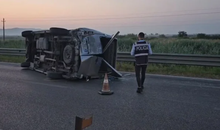
 Flash News
Flash News
Iran attacks Israel with ballistic missiles
"I wanted to do it...", the testimony of the Albanian man who killed his ex-wife in Italy is revealed
Two vehicles collide in Korça, one injured
Photo/ Mother of two children, who is the Albanian woman who was stabbed to death, was divorced from the perpetrator 3 years ago
Italy/ 45-year-old Albanian woman stabbed to death by ex-husband
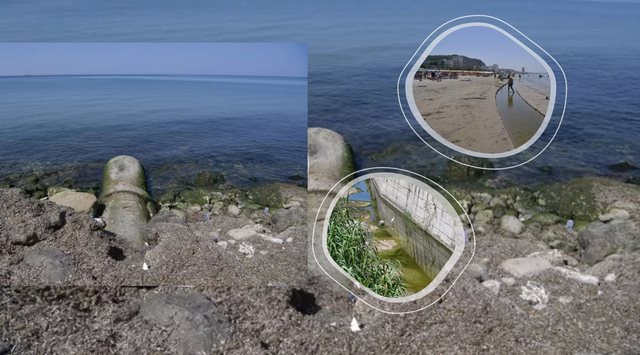
A photo report from the Durrës coast, where holidaymakers face visible and dangerous pollution as they try to enjoy the early summer. Untreated sewage continues to flow openly into the sea, in full view of holidaymakers and authorities. Environmental experts and local activists are raising the alarm about a looming crisis that is worsening every year.
June started with record temperatures, as if it were August. An early summer loaded with beachgoers, tourists, heat waves and… black water.
Monday, June 9, found me with photographer Atdhe Mulla in Porto Romano, one of the most polluted marine areas in Albania, according to the National Environment Agency. In this port-industrial neighborhood on the outskirts of Durrës, pollution is a long-standing problem due to wastewater discharges.
At the entrance to the port, access is limited, but at a hidden point behind the cargo terminals, urban sewage is discharged without any treatment. The discharge pipe is no longer visible to the naked eye, but its presence is felt by the nose. A heavy smell, a mixture of manure and methane, is felt immediately as you approach the area.
'The main factor in the pollution of coastal bathing waters remains the discharge of untreated urban water into coastal receiving waters, directly and indirectly, which causes pollution of these waters,' the National Environment Agency raises concerns in its latest report.
We climb a low hill, where a few one- or two-story houses stand above the harbor, with quiet courtyards and windows looking out to the sea.
From here, through the camera lens, we can see the area where the sewage is being dumped. The color of the water changes. It is a visual evidence of pollution that cannot be hidden, neither by wind nor by sunlight.
According to the NEA, the situation in Porto Romano has been out of control for years. Water monitoring there shows that the values of suspended matter, microorganisms and organic pollutants have exceeded the permitted norm.
'The main factor in the pollution of coastal bathing waters remains the discharge of untreated urban water into coastal receiving waters, directly and indirectly, which causes pollution of these waters,' the National Environment Agency raises concerns in its latest report.
The urban irony of the tourist Volga
From the outskirts we continue our journey towards the tourist heart of Durrës, the Volga area. The 'Taulantia' promenade is one of the most visited spots by local and foreign holidaymakers. However, the sewage discharge pipeline in this area is exposed. It flows openly into the sea, without any attempt at camouflage.
This pipeline discharges untreated water from neighborhood number 1, where hotels, restaurants, and tourist businesses are located.
The sand is covered with black balls of seaweed, forming small dunes, like scars on the shoreline. The color of the water changes noticeably near the tube. Yet no one seems concerned.
Pak metra larg tubit, në këtë ditë të nxehtë qershori, gjejmë të moshuar që shijojnë detin. Një burrë me kapele të bardhë noton qetësisht, ndërsa një tjetër merr rreze dielli me kokën mbuluar përgjatë bregut.
Tubi shkarkues në zemër të Durrësit nuk është një rast i izoluar. Qyteti përballet me disa zona të nxehta, ku ujërat e përdorura derdhen drejtpërdrejt në det, pa asnjë trajtim paraprak.
‘I gjithë rrjeti i kanalizimeve nuk ka arritur të eci në të njëjtin ritëm me zhvillimin dhe zgjerimin e qytetit. Ujësjellës kanalizimet kanë marrë financime të ndryshme ndër vite, kryesisht nga Banka Botërore por edhe partnerët europianë të cilat shkojnë mbi 100 milionë euro. Dhe pavarësisht këtij investimi, mund të themi që vetëm një pjesë e zonës së plazhit është tërësisht e lidhur me impiantin e ujërave të ndotura.
Ndërsa në pjesën e qytetit, periferisë vijojnë që kanalizimet të mos jenë tërësisht të lidhura më impiantin e ujërave të përdorura dhe si pasojë derdhen menjëherë në bregdetin e qytetit të Durrësit.’, thotë Geri Emiri, drejtues i qendrës Amfora në Durrës.
Përroi i Agait në rrjedhën e ndotjes
E mbyllim udhëtimin tonë njëditor në zonën e njohur si Përroi i Agait, tek Plepat në Durrës. Është e hënë, por bregu i detit është i mbushur me qindra pushues. Përpara tyre, një kanal i hapur, i gjerë dhe i ndotur, derdhet drejtpërdrejt në det.
‘Gjithë ajo jeshilja që vesh bregun është sallata e detit ose në emrin shkencor ‘Ulva lactuca’ dhe është treguesi më i qartë, i shpejtë edhe i saktë për ngarkesën e lartë të lëndëve organike (kryesisht nitrate e fosfate) që vijnë si pasojë e shkarkimeve të ujërave të zeza të patrajtuara’, shpjegon eksperti i mjedisit Olsi Nika nga EcoAlbania.
Uji është i errët, por kjo nuk i ndalon pushuesit të futen. Njëri prej tyre është Astrit Seferi, 64 vjeç, me origjinë nga Korça, që prej tre dekadash jeton në Durrës. E gjejmë shtrirë në një shezllon, duke dëgjuar muzikë popullore nga një boks të vogël. Në krahun e tij të djathë, pak metër më tutje, ndodhet kanali.
“E di që s’është shumë e pastër, por ku tjetër të shkoj?’ – thotë me një buzëqeshje të qetë, ndërsa dielli i qershorit përvëlon mbi rërë.
Astriti është piktor. Çdo pasdite i kalon duke bërë portrete për turistët, vendas dhe të huaj.Ndaj orët e paradites I shfrytëzon të marrë rreze dhe të notojë. ‘Zgjedh vende të ndryshme, po sot këtu erdha pasi gjeta parkim lehtë.’, thotë ai.
Më tej, disa fëmijë hidhen nga bregu me britma gëzimi, të tjerë notojnë mbi lodra plastike që lëkunden lehtë mbi një sipërfaqe uji që s’është as blu, as i pastër.
Sipas Agjencisë së Mjedisit në plazhet e Durrësit dhe Gjirit të Lalzit 53% e stacioneve i përkasin cilësisë së keqe, pra kategorisë D dhe kërkohen masa të menjëhershme. Krahasuar me vitet e shkuara monitorimi nxjerr në pah përkeqësim të situatës në këto plazhe. Ndotja e tyre nuk është më thjesht një çështje estetike apo sezonale është një kërcënim i përhershëm për shëndetin publik, për mjedisin dhe për vetë imazhin e vendit.
'Discharging wastewater into the sea is first and foremost a damage to the tourist image of the city of Durrës, but on the other hand it is a risk for the spread of infections for holidaymakers who want to frequent nearby spots,' sadly states Geri, a journalist and activist from Durrës who has followed this issue for years.
The government has declared tourism as one of the main priorities for economic development. Last year, Albania registered over 11 million visitors, while expectations for this year are higher. However, environmental challenges such as coastal water pollution risk undoing this potential. Experts warn that without serious interventions to improve wastewater infrastructure and implement environmental standards, the natural beauty could become a source of disappointment for tourists./ Faktoje.al
Latest news


Trump vetoes Israeli plan to assassinate Iran's supreme leader
2025-06-15 21:38:01
Vote recount in Tirana, Këlliçi: We want Alimehmet's mandate
2025-06-15 21:17:41
Erdogan calls Trump: We are ready to mediate for Iran
2025-06-15 20:55:34

Netanyahu says he attacked Iran to prevent 'nuclear holocaust'
2025-06-15 20:02:04
Migrant agreements: What benefits Kosovo and why are they criticized?
2025-06-15 19:43:08
Gjirokastër/ Fire burns three hectares of grass near the Kardhiqi Bridge
2025-06-15 19:22:34

Gattuso appointed new Italy national team coach
2025-06-15 18:34:17
Over 400 people have been killed so far in Israeli attacks on Iran
2025-06-15 18:15:47
Trump warns of return to Kosovo-Serbia issue: Biden damaged it
2025-06-15 17:46:52
Bylykbashi: Current electoral system is toxic
2025-06-15 17:25:20
Trump vows for Iran-Israel deal, mentions Kosovo case with Serbia
2025-06-15 16:59:02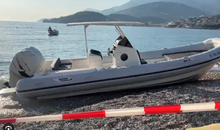
German tourist injured on Gjipesa beach, hit by a dinghy's propeller
2025-06-15 16:40:31

Iran attacks Israel with ballistic missiles
2025-06-15 15:48:49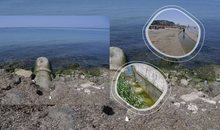
Fecal beach in Durrës, the other side of the tourist miracle
2025-06-15 15:30:57
The attempt to constitute the Assembly in Kosovo fails again
2025-06-15 14:59:10
Ish-presidentit francez Sarkozy i hiqet medalja e Legjionit të Nderit
2025-06-15 14:58:46
Shkodra, with the highest population contraction after the Census
2025-06-15 14:31:47

Caused a fatal accident and left the scene, 35-year-old arrested in Lezha
2025-06-15 13:40:10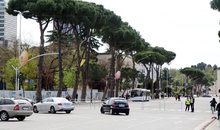

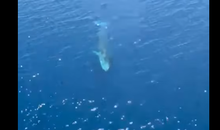
Rare! Whale appears near the Karaburun peninsula
2025-06-15 12:42:49
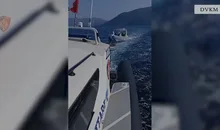
Stranded at sea, Border Police brings 8 foreign citizens ashore
2025-06-15 12:05:01
Who were the four Iranian generals killed in the Israeli attack?
2025-06-15 11:43:36

Simon Zereci is appointed head of the Republic Guard
2025-06-15 11:10:36
Gennaro Gattuso is expected to be the new Italy coach
2025-06-15 10:45:46
Two vehicles collide in Korça, one injured
2025-06-15 10:20:28
Trump says US can easily broker deal between Iran and Israel
2025-06-15 10:06:11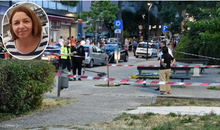


Italy/ 45-year-old Albanian woman stabbed to death by ex-husband
2025-06-15 09:16:43
Foreign exchange, the rate at which foreign currencies are sold and bought
2025-06-15 09:03:57
Horoscope, what do the stars have in store for you today?
2025-06-15 08:50:41
Albania risks falling below 2 million inhabitants before 2035
2025-06-15 08:30:11
Temperatures reach up to 32 degrees Celsius, weather forecast
2025-06-15 08:18:49
Morning Post/ In 2 lines: What mattered yesterday in Albania
2025-06-15 08:00:49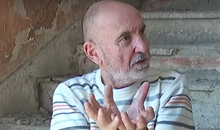

Two vehicles collide in Karbunara, one injured
2025-06-14 21:36:38
A person is found without signs of life in Peja
2025-06-14 21:18:19

Are you hungry after exercising? Experts recommend these snacks
2025-06-14 20:36:24

Kudos to Edi Rama for committing the May 11 theft in front of the cameras!
2025-06-14 19:57:21


These are the 3 most jealous zodiac signs
2025-06-14 19:01:29

Nesho: Iran is the violator of nuclear production
2025-06-14 18:21:43

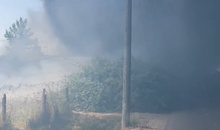
A scrap metal collection point in Kavaja is engulfed in flames
2025-06-14 17:19:47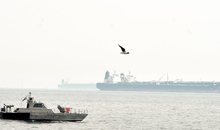
After Israeli attacks, Iran considers blocking the Strait of Hormuz
2025-06-14 17:02:28


Ja çfarë i ndodh organizmit tuaj nëse konsumoni çdo ditë limon
2025-06-14 16:16:23



Internationally wanted for corruption, Loran Dusha extradited from Zimbabwe
2025-06-14 15:30:04
VIDEO/ Dubai skyscraper engulfed in flames, 3,800 residents evacuated
2025-06-14 15:16:49
With these 5 ways, you can cope with the heat even at home
2025-06-14 15:08:46


Fire in Kavaja, a scrap metal collection point engulfed in flames
2025-06-14 14:43:40
Israel eliminates 9 scientists of the Iranian nuclear program
2025-06-14 14:33:34
The appeal of the GJKKO leaves the seizure of Arben Ahmetaj's assets in force
2025-06-14 14:17:14
Less appearance, more connection: How the way men love is changing
2025-06-14 14:16:13
Astrit Sinanaj is arrested in Tirana, he tried twice to kill a businessman
2025-06-14 14:02:59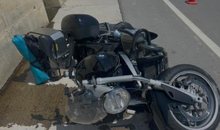
Accident on Arbri Road, two foreign tourists end up in Trauma
2025-06-14 13:37:03




Tourist found dead inside apartment in Vlora
2025-06-14 12:46:40

Accident in Levan, truck with kitchen utensils ends up in the canal
2025-06-14 12:12:57

Clashes at the Order of the Psychologist, Treska declares the elections invalid
2025-06-14 11:45:55
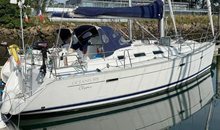
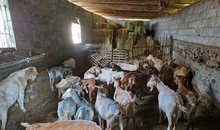


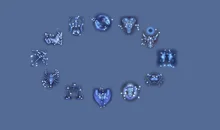
The weekend brings luck for this zodiac sign, a pleasant surprise is coming!
2025-06-14 10:34:31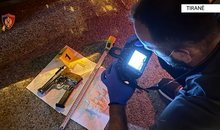
Caught with firearms and drugs in the car, two people arrested at "Ali Demi"
2025-06-14 10:25:17
Analysis: Israel's attack on Iran, ignition of conflict in the Middle East?
2025-06-14 10:16:14
Gambling in a bar, the owner and the waiter are arrested in Divjaka (NAMES)
2025-06-14 10:07:27

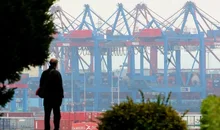
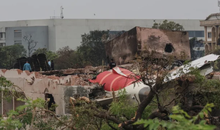

Tourist packages, how much does Albania "cost"
2025-06-14 08:58:23
